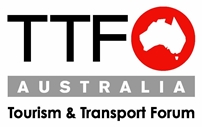
The cap on flights at Sydney Airport is fast becoming a cap on international tourists
International visitors are flocking to Australia like never before. In 2016, we attracted a record 8.3 million international visitors, nearly a million more than we did the year before. Just look back 40 years ago to 1976 when Australia had only 535,000 international visitors and you can see the amazing transformation of aviation and the benefits it is bringing to our national economy. In that same period we have gone from having only 500 – that’s right, just 500 Chinese visitors – to a whopping 1.2 million last year. China is still rocketing up the charts, and will overtake New Zealand as our largest international visitor market later this year.
Australia has worked hard to attract international visitors, right back to the famous Qantas koala ads and Paul Hogan’s legendary ‘shrimp on the barbie’ campaign, and tourism now earns the nation more export income than coal and rural exports. But our global efforts to grow the visitor economy are being undermined and threatened by the failure of successive Federal Governments to facilitate growth with sensible reforms which help maximise the efficiency of our national aviation network.
Every aircraft that arrives at and departs from an Australian airport represents jobs and economic activity in our cities and regional centres. Sydney Airport, as Australia’s largest international gateway, is critical to the national network. Limiting its ability to grow and operate effectively has a knock-on effect on other airports around the country, harming jobs and economic growth.
Sydney Airport has an overnight curfew on most aircraft operations. We know that it is not going to change. What does need to change is the crippling constraints which limit aircraft movements during the airport’s operating hours. Known as slot and movement caps, these limit the maximum number of aircraft arrivals and departures as well as the number of aircraft movements each hour to 80. They are also measured over a rolling hour commencing every 15 minutes, effectively restricting movements to 20 per 15 minute block. And there is no flexibility to reschedule delayed aircraft to the next 15 minute block. That means that if there are only 19 movements in one block, it is not permissible to operate 21 in the following block. That is just lunacy.
These restrictions must be reviewed urgently to enable the growth in our international visitor economy to continue, and in turn support more jobs and economic activity in our cities and regional communities.
Considering the proposed Western Sydney Airport is still at least 10 years away, we urgently need reforms at the current airport, including increasing hourly slot and movement caps to 90 aircraft per hour to meet peak demand and accommodate growth in both international and domestic flights. And we need to remove the ridiculous 15-minute measure, to enable more scheduling flexibility when delays occur. Governments claim they recognise the importance of tourism as a key driver of economic growth, but continue to frustrate sensible, measured and urgently-needed reform at our largest international gateway. It’s time to ensure that the nation’s largest airport and our growing national aviation network can accommodate the huge volumes of visitors we have invited here. Without immediate action, we will squander the gains we have worked so long and hard to achieve, and send our guests packing to other international destinations.
